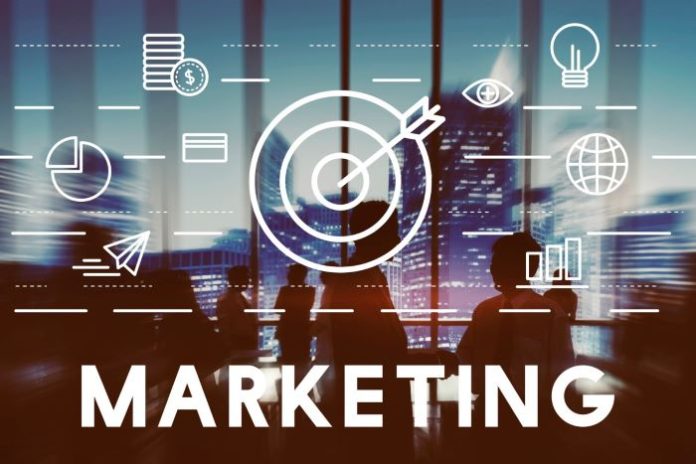Many businesses struggle to keep up with fast-changing technology and shifting customer expectations. IT systems break down, strategic marketing feels out of sync, and the effort to stay ahead often drains time and money.
Sound familiar? You’re not alone.
Managed IT services can resolve tech challenges while thoughtful marketing refines your message. Together, they help businesses grow smarter, faster, and stronger. This blog will explain how these two approaches work together to streamline operations, enhance security, and create stronger connections with customers.
Looking for practical solutions? Keep reading!
Table of contents
The Role of Managed IT Services in Digital Transformation
Managed IT services assist businesses in staying prepared for swift advancements in technology. They minimize downtime and ensure systems operate efficiently, allowing teams to concentrate on essential tasks.
Optimizing IT infrastructure for scalability
Businesses must establish a strong base for IT infrastructure to grow effectively. Cloud computing solutions enable companies to increase storage and processing power as needed without physical hardware constraints.
This adaptable method removes unnecessary costs associated with traditional systems. Businesses looking to implement similar scalable and efficient solutions can explore TravTech’s services or other MSPs for technology offerings designed to support growth without overhauling existing infrastructure.
Automation tools reduce manual tasks, enhancing operations while managing higher workloads. IT services also combine advanced network technologies, ensuring consistent performance during periods of high demand.
These improvements assist enterprises in managing growth while maintaining dependability and speed.

Enhancing cybersecurity measures
Increasing the IT infrastructure introduces new vulnerabilities. Cybercriminals focus on weak points in systems, leading to financial and reputational damage. Safeguarding business data requires a reliable cybersecurity framework and regular updates to stay ahead of threats.
Investments in tools like firewalls, intrusion detection systems, and multi-factor authentication protect sensitive information. Educating employees on phishing and social engineering tactics enhances defenses further.
As one expert noted:.
Cybersecurity is not just an IT issue; it’s a business priority.
Preventative measures today avoid costly breaches tomorrow.
Streamlining operations through automation
Automation simplifies repetitive tasks, freeing teams to focus on core business goals. IT services can introduce tools that manage workflows, track deadlines, and reduce manual errors.
For example, cloud computing helps businesses perform data backups without human intervention.
Automated systems also improve operational efficiency by combining multiple processes. Marketing platforms can schedule campaigns while analyzing performance in real-time. Businesses save time and cut costs with these solutions, leading to faster growth and better resource management.
Strategic Marketing as a Catalyst for Digital Transformation
Strong marketing connects businesses to their audience in ways that matter. It sparks growth by focusing on what customers truly want.
Leveraging data analytics for targeted campaigns
Data analytics identifies customer behavior and trends. Businesses can create campaigns customized for specific audience segments by studying purchase patterns, browsing habits, or demographic data.
This approach enhances the chances of reaching the right customers at the right time, according to Jumpfactor’s findings, which highlight that data-backed targeting can significantly improve ROI in digital transformation strategies.
Smart insights minimize wasted efforts on broad strategies. Predictive models determine which marketing channels yield better results for different groups. With this understanding, budget allocation becomes more accurate, saving money while improving overall performance in digital change initiatives.
Enhancing customer engagement through personalization
Personalization increases business success by speaking directly to customer needs. Customized marketing lets businesses deliver relevant offers, content, and solutions that align with individual preferences.
For example, using purchase history or browsing data can help in creating exclusive discounts or product recommendations. Customers feel valued when interactions address their specific interests.
Modern IT services enhance this approach through data analytics and AI tools. These technologies analyze patterns and predict behavior to create precise messaging across platforms like email, social media, and websites.
Businesses staying personal build stronger connections, improve loyalty, and gain a competitive edge in the market.
Utilizing omnichannel marketing strategies
Shifting from personalization, omnichannel marketing brings consistency across all customer touchpoints. This approach integrates efforts on platforms like email, social media, and websites to create a unified message.
Customers experience the same branding whether they browse online or visit in person.
A strong omnichannel strategy ensures no communication gaps between channels. For example, businesses can connect their CRM systems with marketing tools to track customer behavior effectively.
It increases efficiency while improving interaction opportunities at every step of the buyer’s journey.
Integrating Managed IT Services and Strategic Marketing
Merging IT services with marketing sparks collaboration that pushes boundaries and drives results—read on to see how it works.
Driving innovation through collaboration
Teams from IT services and marketing can work together to create improved solutions. For example, IT experts might design cloud computing tools while marketers recommend features customers need most.
Businesses achieve digital progress by combining the strengths of both areas.
Working together also enhances problem-solving speed. A shared focus on operational efficiency or customer interaction leads to quicker decisions. Both teams bring different expertise, which helps enterprises remain competitive in the market.
Aligning IT and marketing goals for seamless transformation
Marketing teams often need real-time data to develop strategies, while IT systems ensure that data flows efficiently. Aligning these goals requires clear communication and shared priorities.
For example, IT can set up analytics platforms that track customer behavior, allowing marketing to target campaigns more accurately.
Both departments thrive when using combined tools such as CRM software or cloud-based solutions for collaboration. Marketing benefits from flexible digital channels, while IT oversees the infrastructure’s reliability.
This partnership increases efficiency and supports long-term business improvement efforts.
Measuring the Impact of Digital Transformation
Track progress through clear goals and see how changes drive real business results.
Key performance indicators (KPIs) to track progress
Tracking progress is essential for any business undergoing digital transformation. KPIs help measure success and identify areas that need improvement.
- Monitor revenue growth. This reflects how well IT services and marketing strategies align with business goals.
- Assess customer acquisition cost (CAC). Lower costs mean more efficient marketing campaigns supported by IT solutions.
- Measure website traffic. Increased visits indicate effective digital presence driven by thoughtful planning.
- Analyze conversion rates. A higher percentage shows better results through targeted campaigns.
- Track customer retention rates. High retention means successful personalization and improved user experience.
- Evaluate system uptime percentages. Reliable IT infrastructure supports uninterrupted operations.
- Examine operational efficiency rates. Faster processes highlight the benefit of technology integration in workflows.
- Review social media interaction metrics, like shares or comments, to determine campaign success across channels.
- Study return on investment (ROI) from combined IT and marketing efforts to ensure financial gains outweigh costs incurred.
- Observe employee productivity data to confirm organized operations through managed IT services have reduced inefficiencies.
Understanding these metrics lays the foundation for combining Managed IT Services with Strategic Marketing effectively in enterprises today!
Evaluating ROI from integrated IT and marketing strategies
Results matter, especially when dollars and efficiency are on the line. Measuring ROI from combining IT services and marketing efforts requires clarity, focus, and accurate methods. Here’s a breakdown.
| Area of Evaluation | How It’s Measured | Why It Matters |
| Cost Savings | Compare pre- and post-integration budgets. Look at IT maintenance expenses and marketing campaign costs. | Identifies whether combined efforts reduce overlapping spending. |
| Conversion Rates | Monitor leads from strategic marketing campaigns that turn into paying customers. | Shows how IT-supported tools enhance targeting or tracking. |
| Customer Retention | Track repeat purchases or engagement over 6 to 12 months. | Demonstrates how technology improves personalized strategic marketing to retain clients. |
| Time Savings | Examine how automation impacts repetitive tasks. Review timelines for campaign launches or IT responses. | Indicates whether combined systems save valuable hours for teams. |
| Revenue Growth | Analyze quarterly or annual sales to identify increases tied to integrated strategies. | Assesses if IT and marketing efforts directly impact bottom-line results. |
| User Engagement | Review indicators like email open rates, website traffic, or app usage patterns. | Focuses on whether customer experience tools are enhancing interactions and results. |
| System Downtime | Track the percentage of downtime after IT optimization and its effect on campaign execution. | Minimizes interruptions that might affect marketing and operations. |
Every number has a purpose. Accurate tracking prevents wasted resources and enables better decisions.
Conclusion
Managed IT services and effective strategic marketing help businesses succeed in the digital age. They streamline operations, safeguard data, and strengthen connections with customers. When coordinated, they create a strong basis for growth and efficiency.
Companies that adopt this approach can stay ahead of trends while concentrating on their objectives. It’s not just a plan; it’s the future of smarter business practices.











